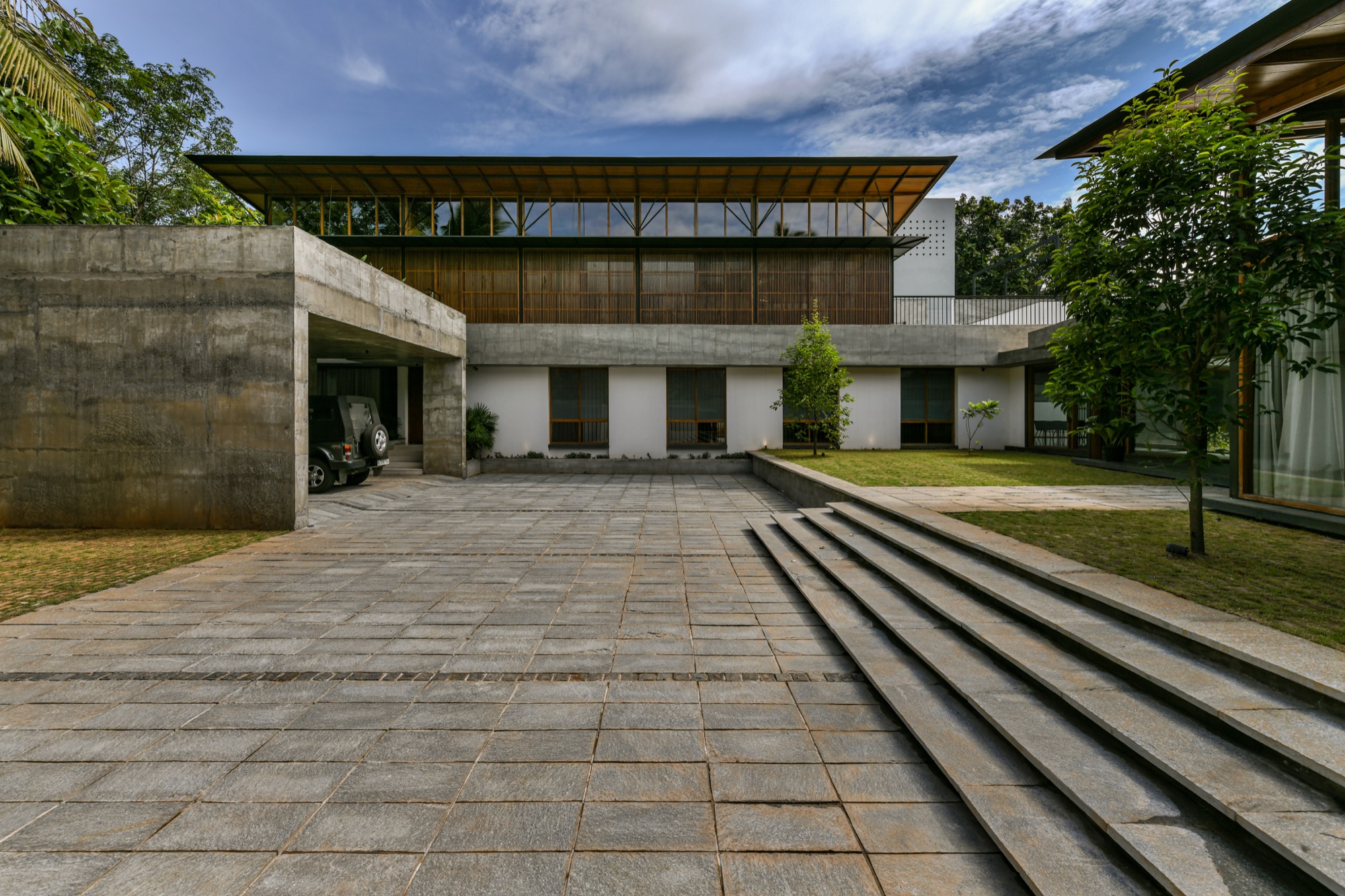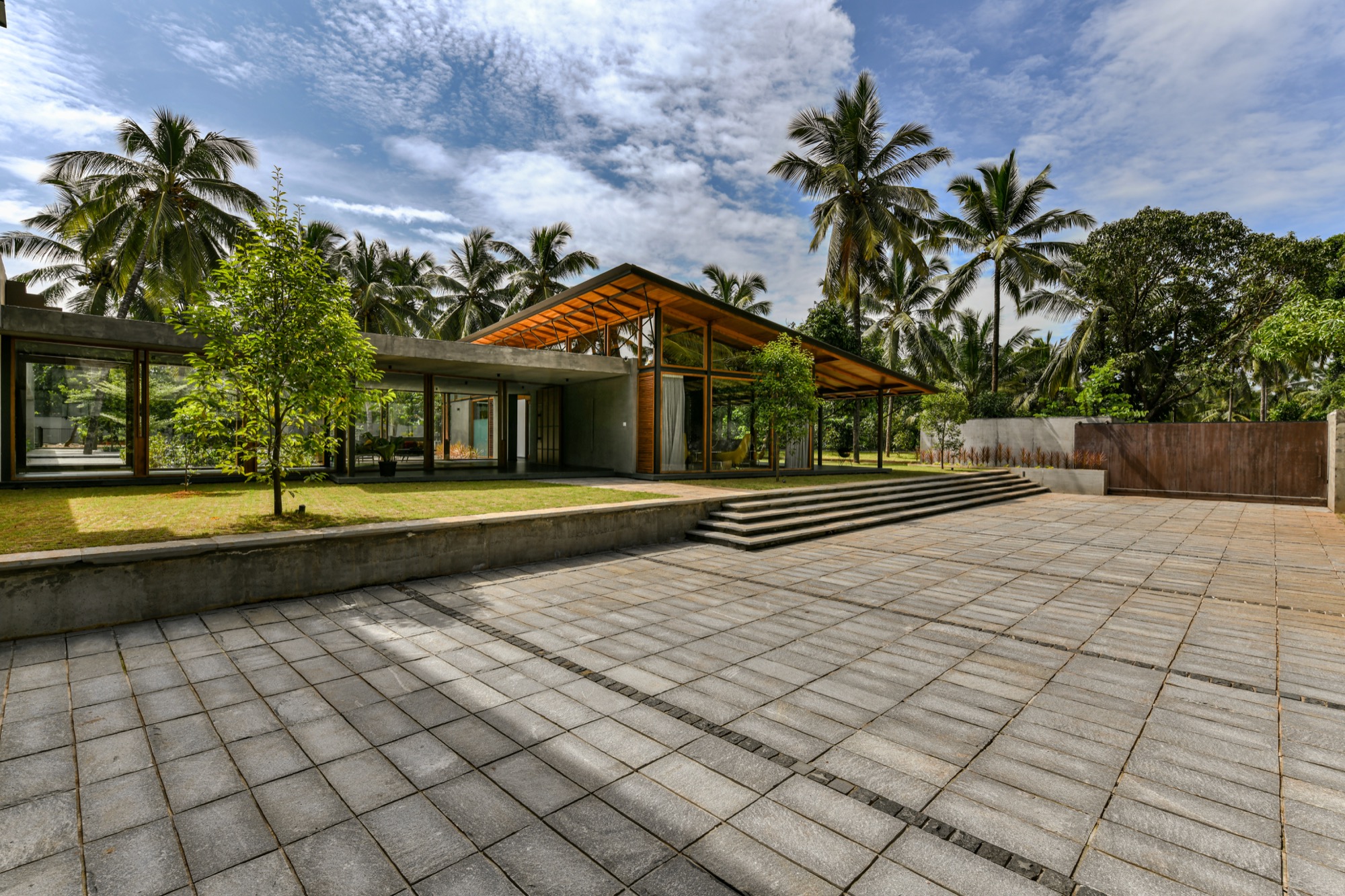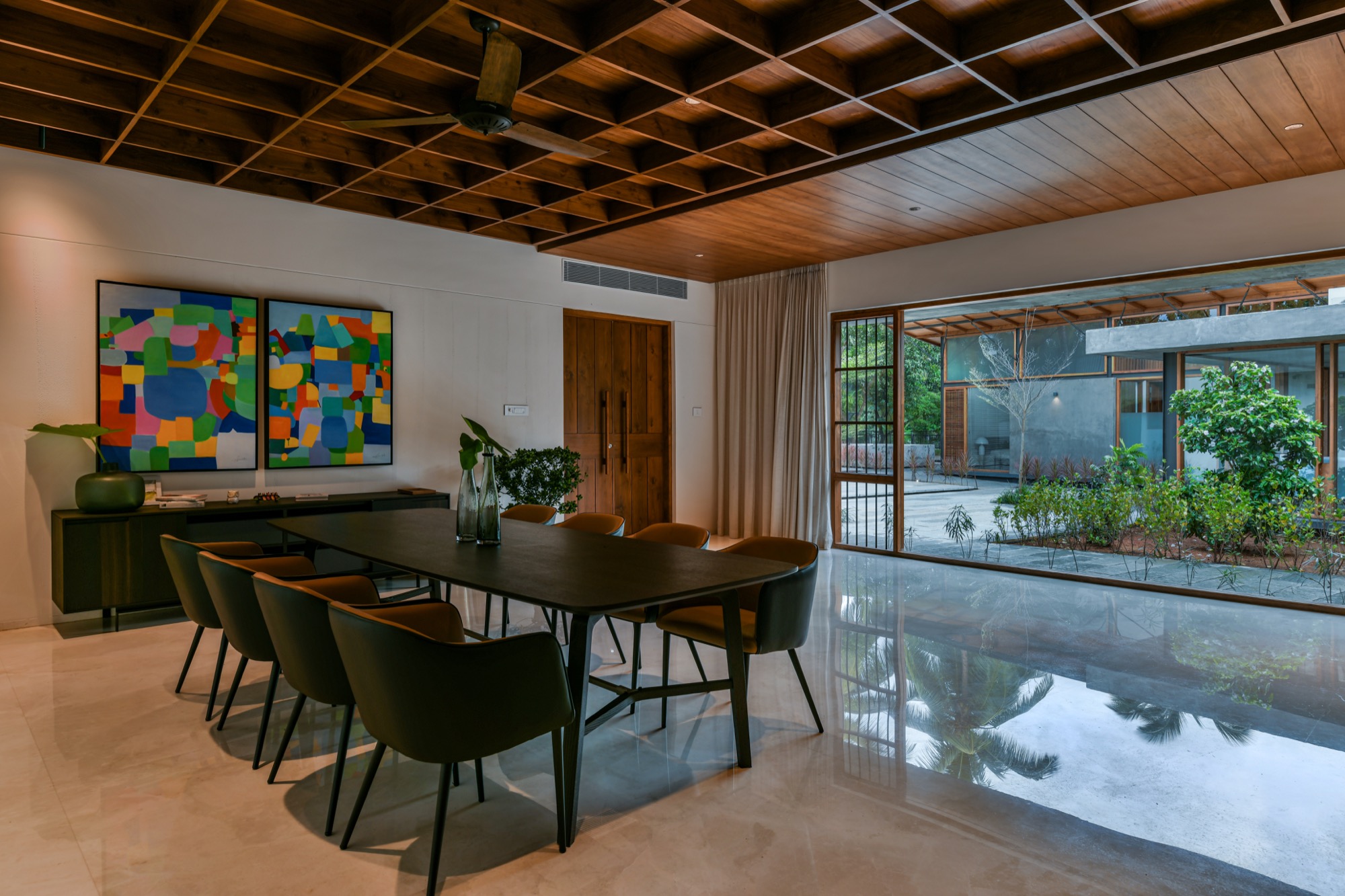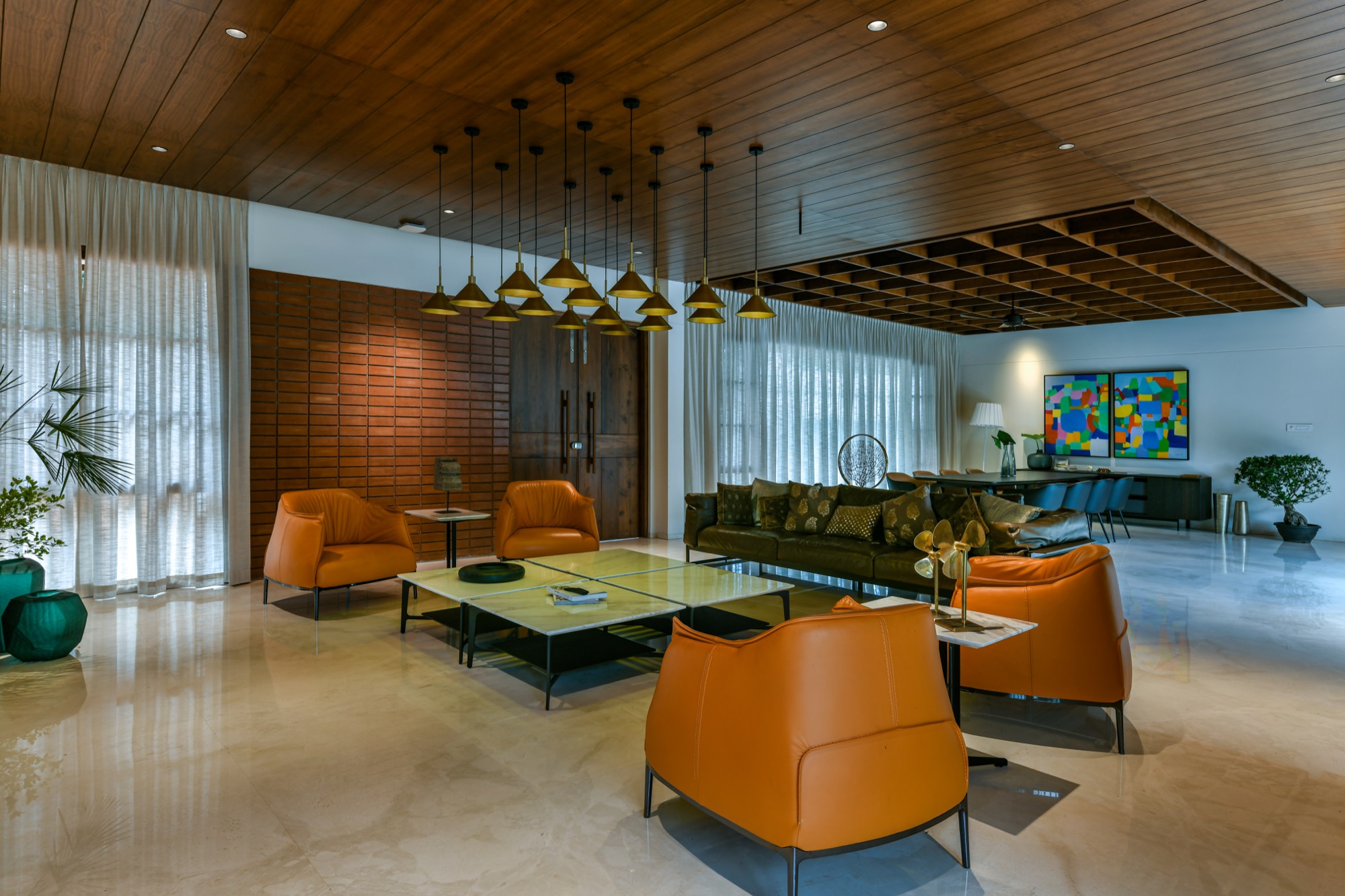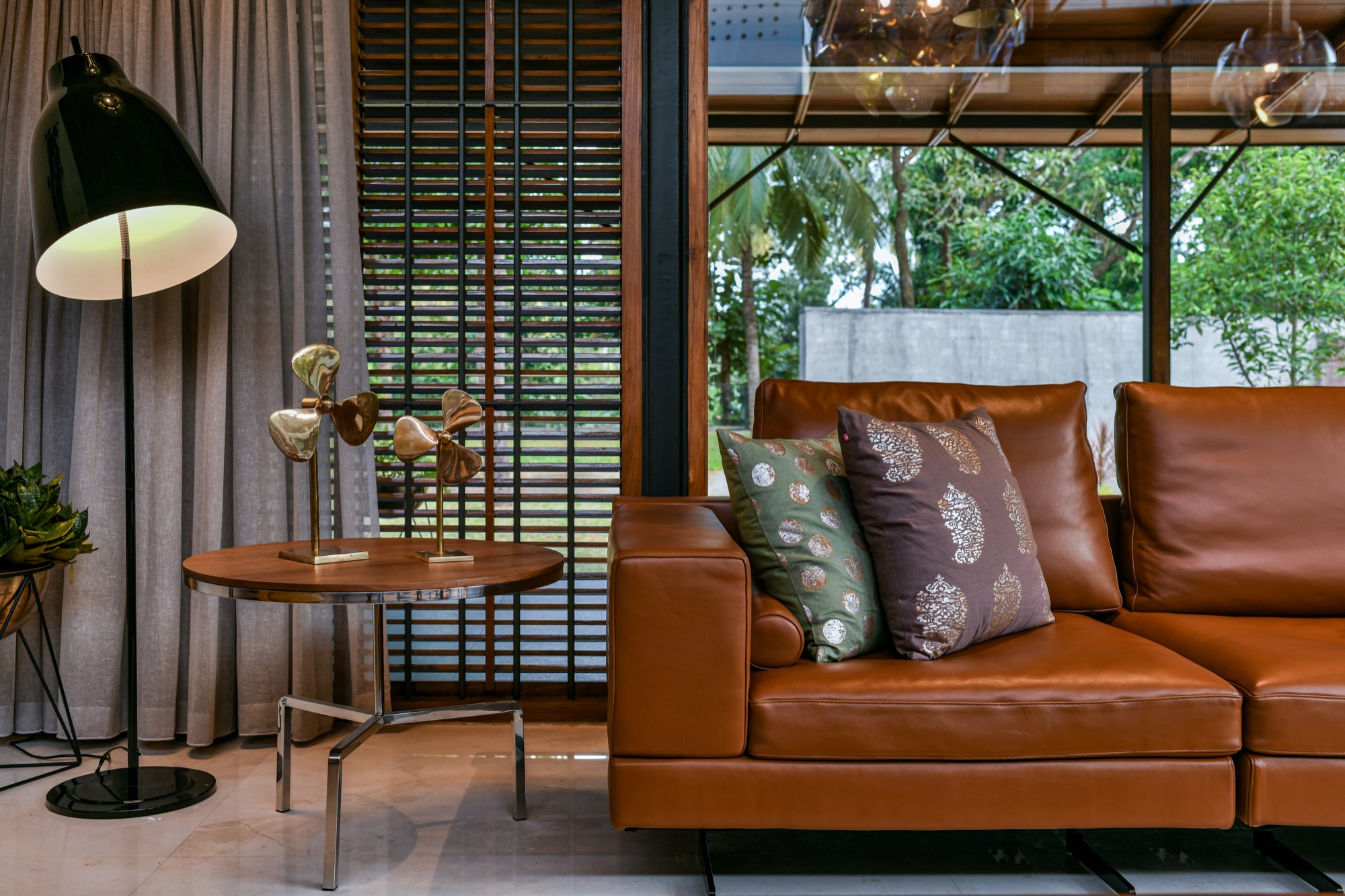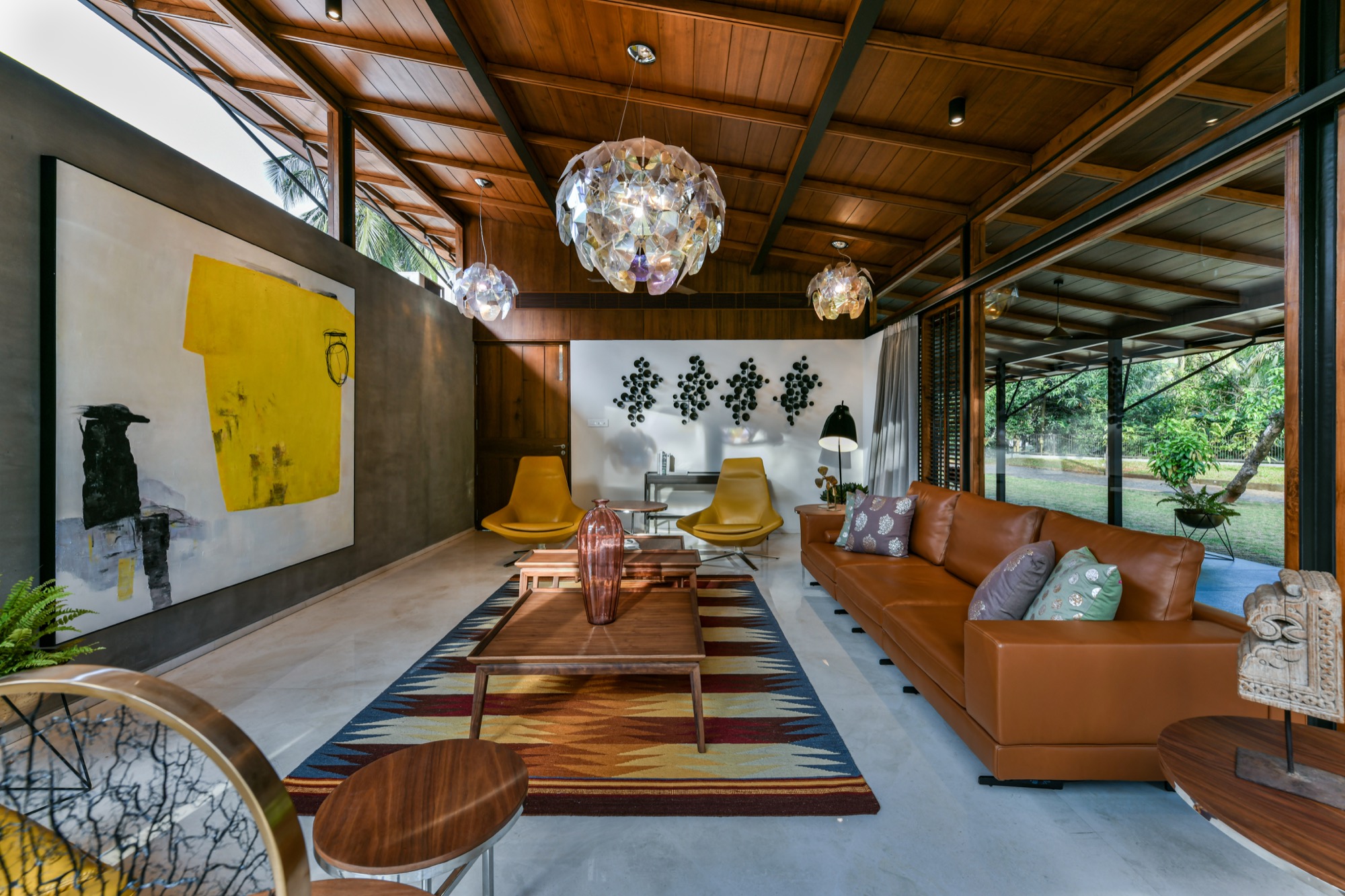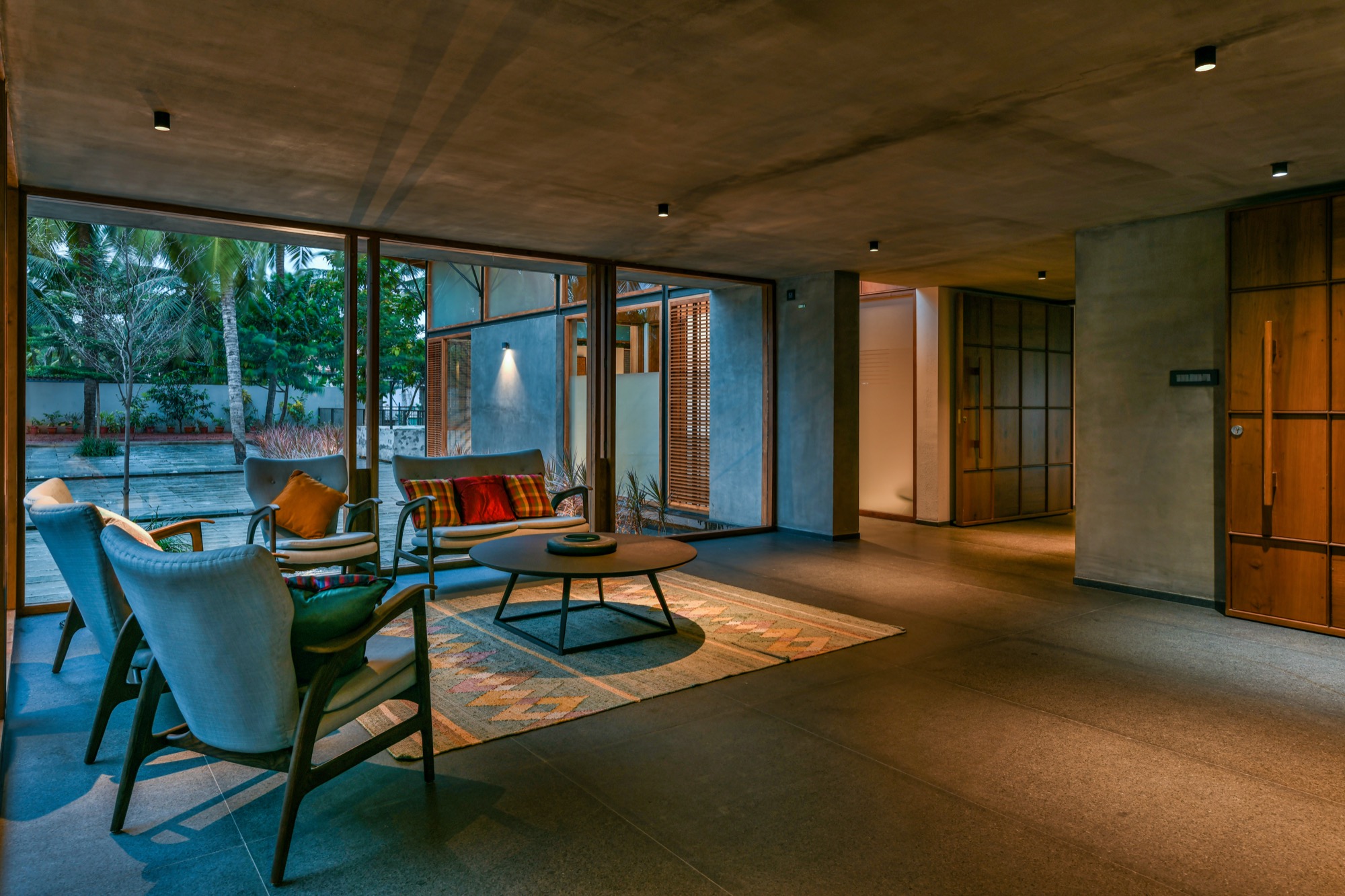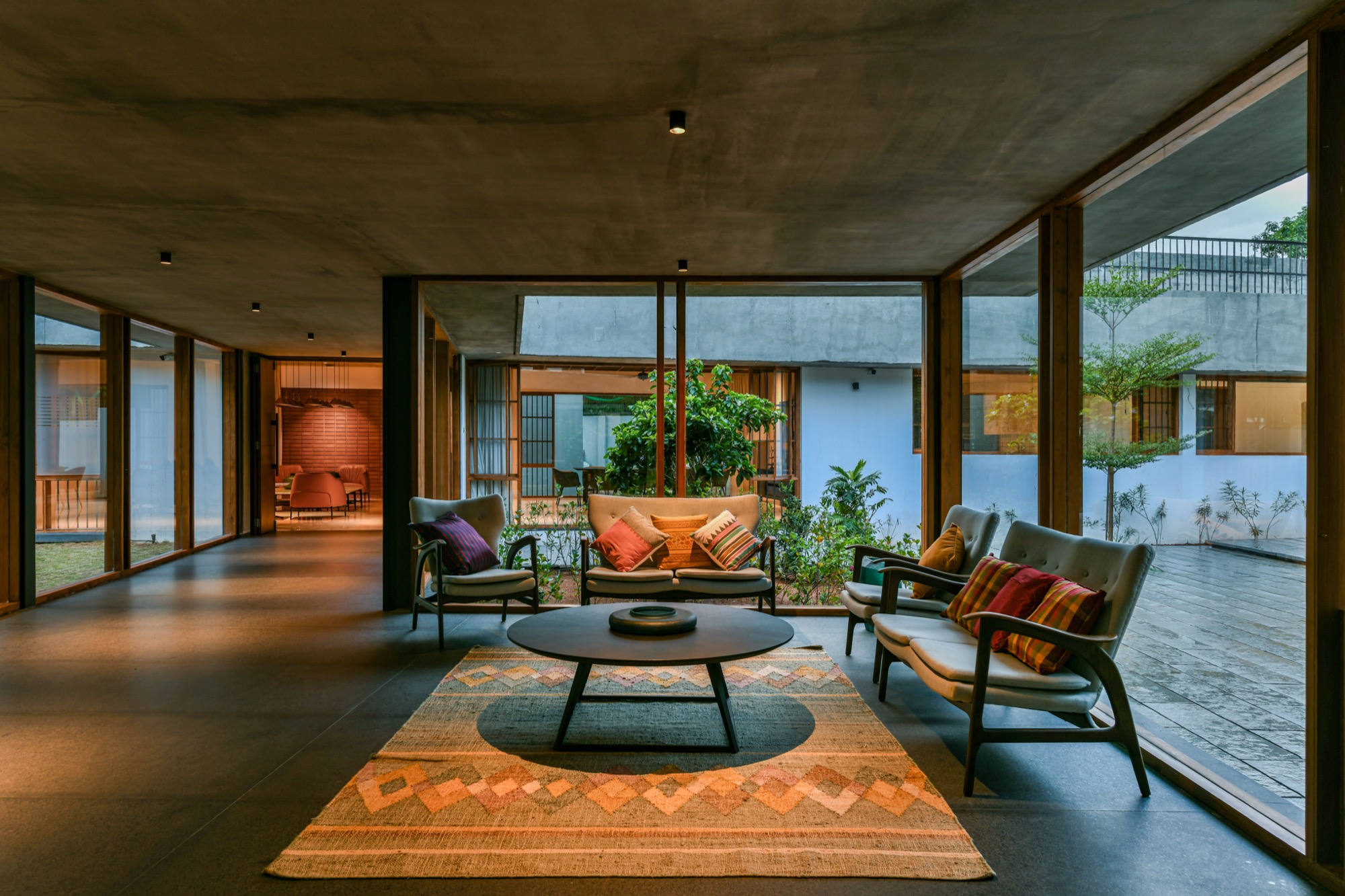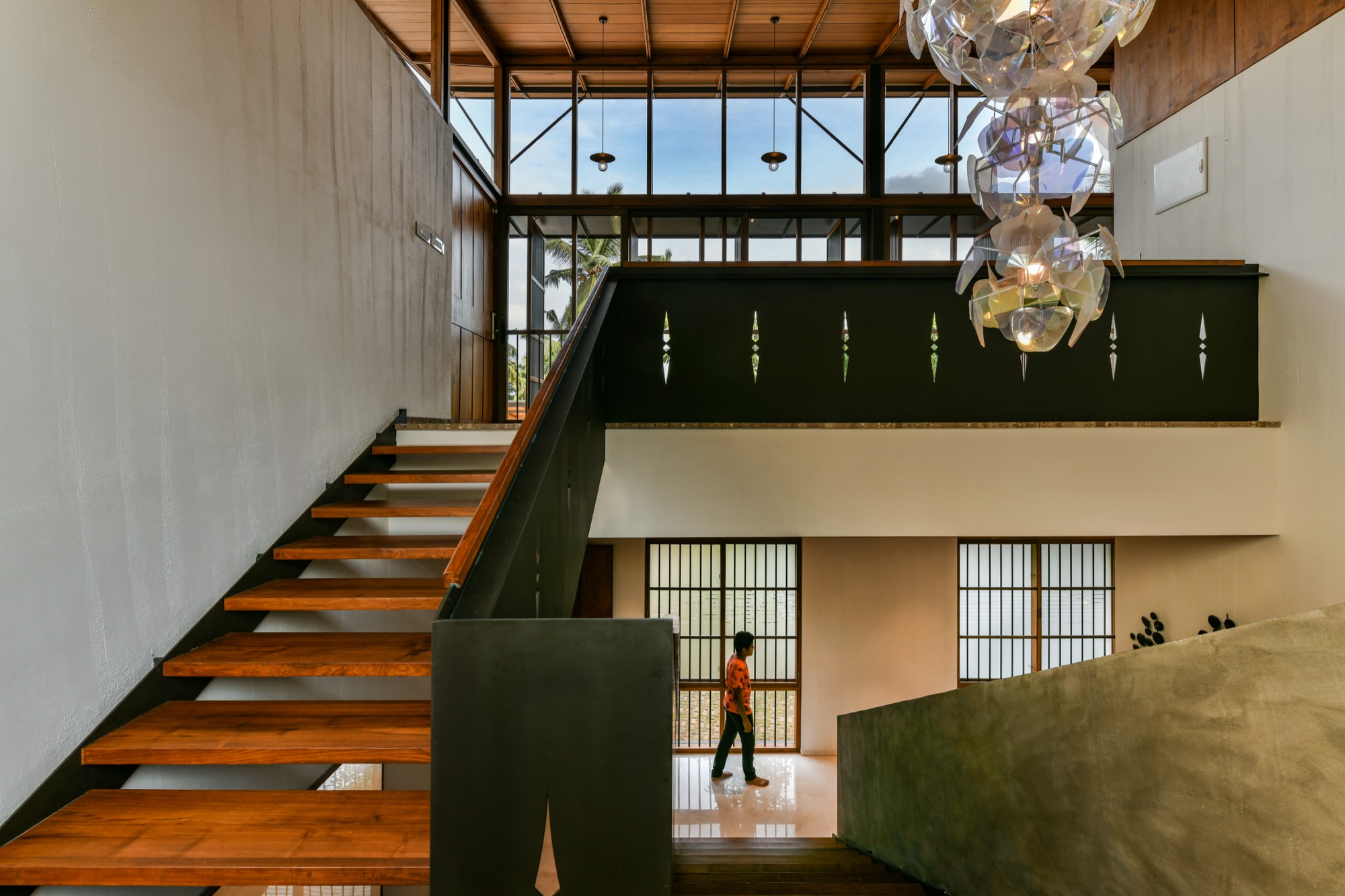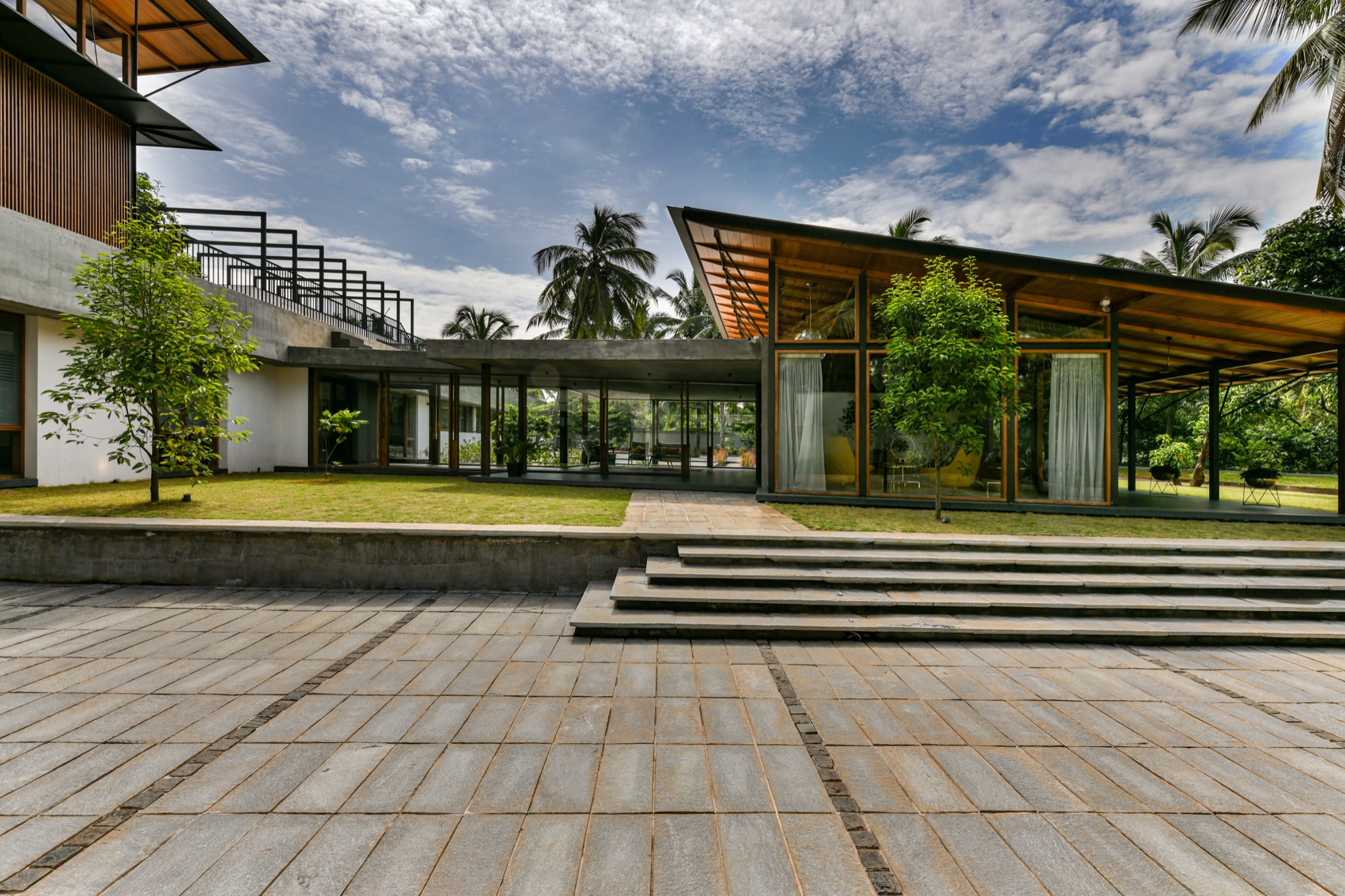 Kerala based architecture firm Thought Parallels Architecture comes up with the Skew House, inspired by modern tropical design amalgamated with traditional architecture.
Kerala based architecture firm Thought Parallels Architecture comes up with the Skew House, inspired by modern tropical design amalgamated with traditional architecture.
Driving through winding narrow roads in Malapuram district in Kerala, brings us to the site overlooking lush rubber plantation, which is abundantly grown in and around gradual slopes, camouflaging the house from plain view.
Spread over an acre of land is the house which has a modern tropical design amalgamated with traditional architecture. The design of the house utilizes the extents of the plot exceedingly well by having a spread out planning. The Design accommodates the brief of the Family which was to create distinctive guest and family spaces. This clearly leads to the formation of two blocks a guest and family, connected with each other by a semi-private living.
The guest block houses a guest living, a prayer room and a guest bedroom arranged in a linear form. The presence of the prayer room prompted the architect to align the block along the traditional direction of pray, thus creating a tilt and breaking the initial parallel axis between the two blocks, hence deriving the name “THE SKEW HOUSE”.
Views of the minimalistic horticulture combining both hard and soft paving around the house from every room is another dimension added to the design. Rooms are well lit and aerated with large open spaces around. The subtle slope of the traditional styled Mangalore tile roof makes the entrance verandah and inner spaces well proportioned in terms of height.The connecting semi-private living is a cozy space with doorways leading into the landscape on either side.
On entering the family block through the connecting semi-private living, one is welcomed by a large living and dining. The linear arrangement of spaces continues with the placing of the staircase followed by 2 bedrooms on one side and a kitchen and other utility spaces on the opposite end. The linearity in the arrangement of spaces brings in natural illumination and ventilation.
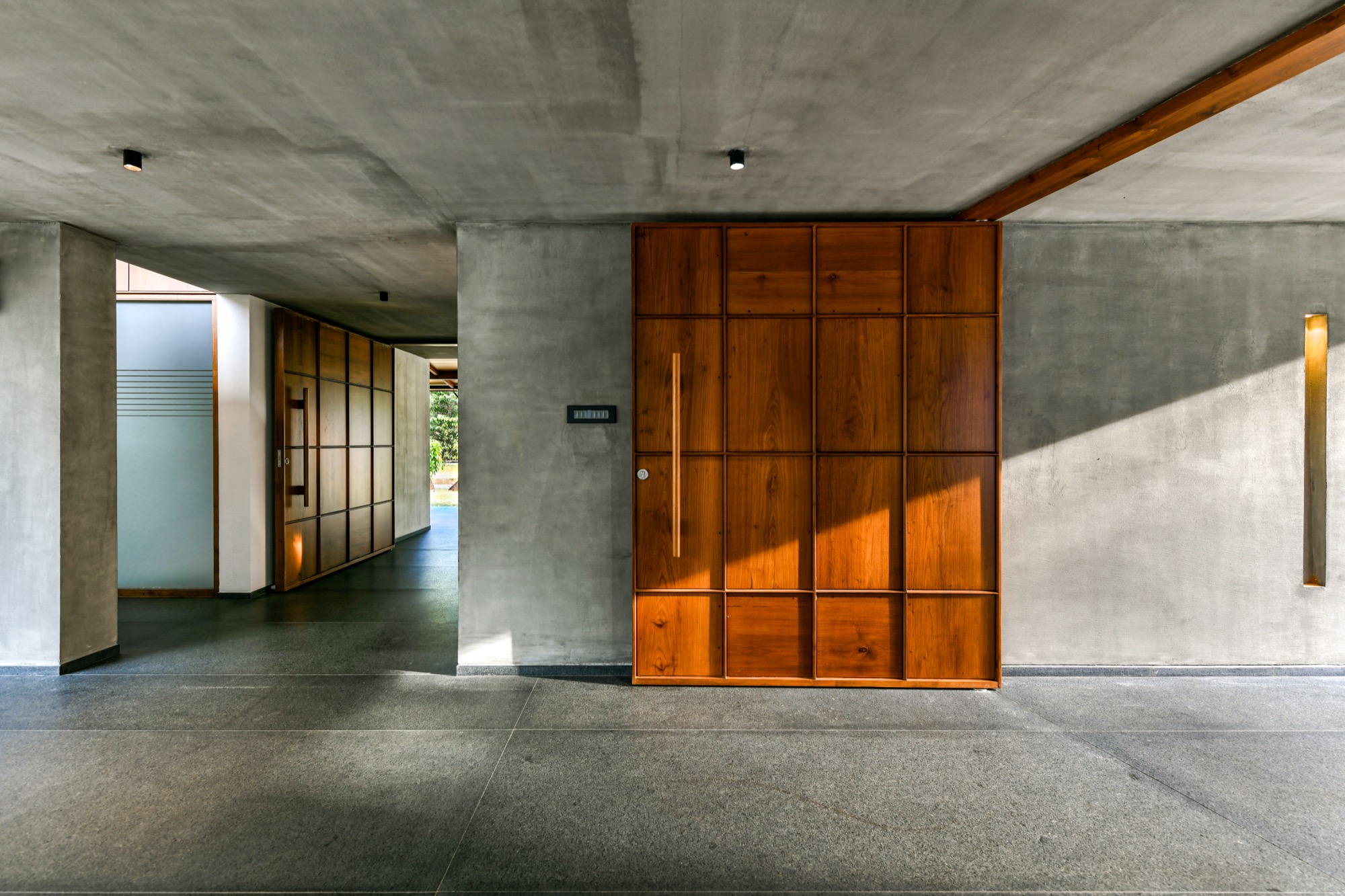
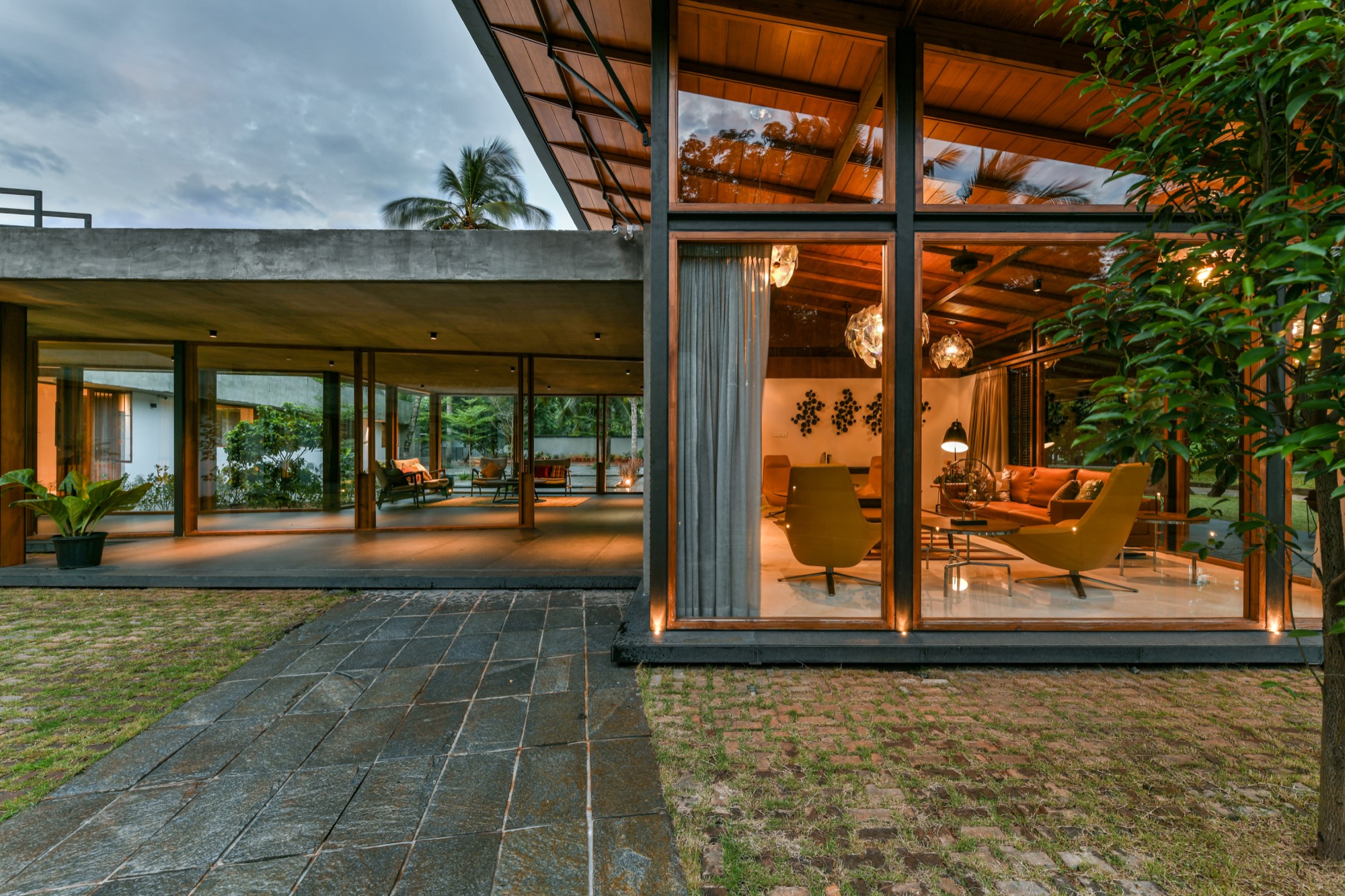
Wooden, steel, and exposed concrete, open riser staircase leads upwards to the first floor. An element by itself, the staircase has a steel railing with a traditional wood carving pattern cut into it which is a subtle but impactful addition. Located on the first floor are 2 bedrooms and a linear pool.
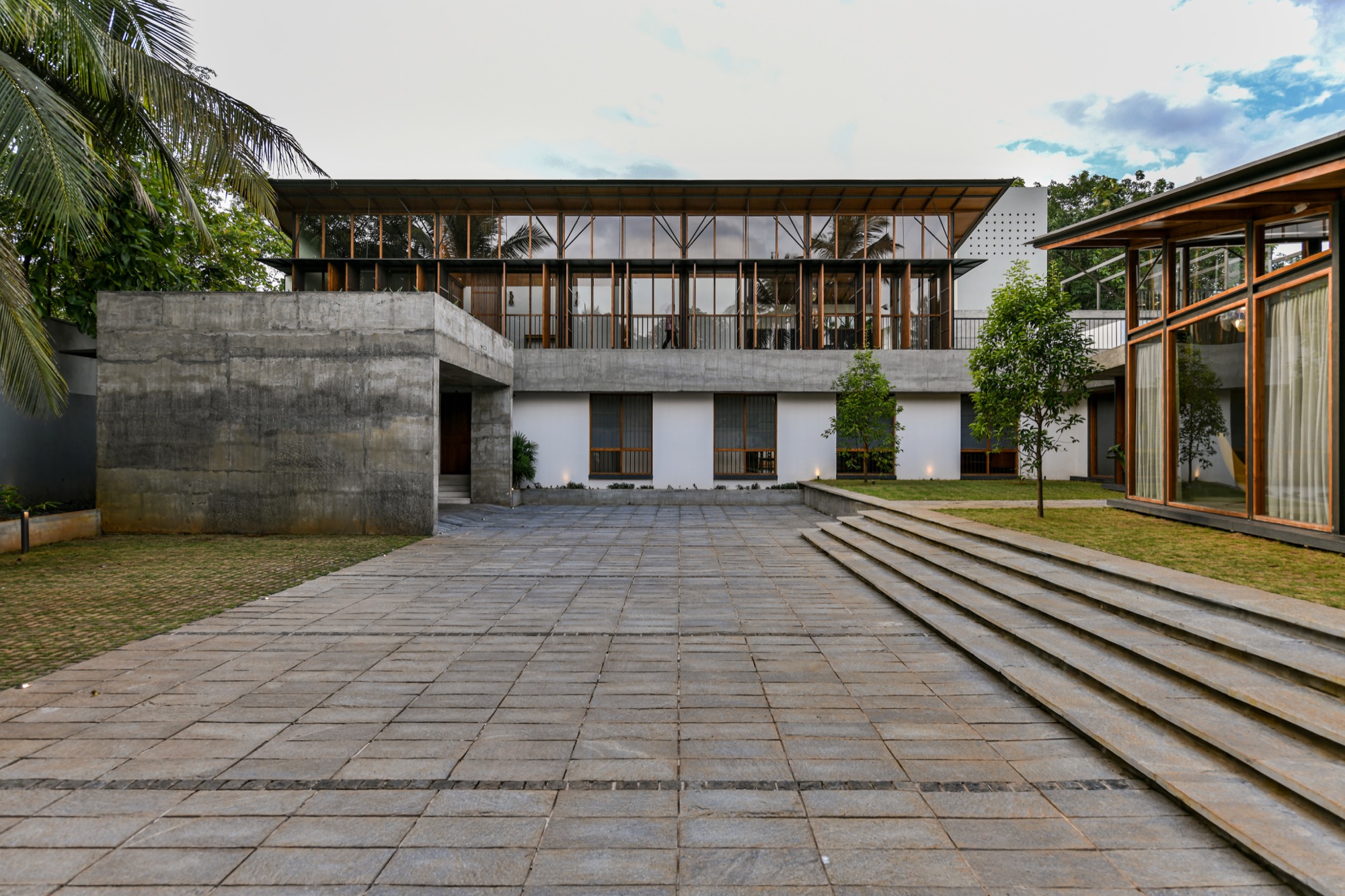 The south-facing facade of the bedroom and corridor leading to the bedrooms have been adorned by louvered openable shutters to keep out the harsh glare and heat from the south but creating a dramatic play of light all along the corridor and bedroom floor and walls.
The south-facing facade of the bedroom and corridor leading to the bedrooms have been adorned by louvered openable shutters to keep out the harsh glare and heat from the south but creating a dramatic play of light all along the corridor and bedroom floor and walls.
The use of traditional Mangalore roof tile roof along with an inner lining of plywood helps in insulating the rooms from the harsh summer heat.
The material pallet has been kept very minimal with steel, wood and exposed concrete as the primary materials. Few elements such as exposed clay brick walls and natural mosaic marble flooring add value to the quality of spaces.
Project Facts
Completion Year: 2018
Gross Built Area: 12,000 square feet built up area in 1 acre plot
Project location: Kerala, India.
Lead Architects: Ar. Nikhil Mohan and Shabna Nikhil
Photo credits: Prashant Bhat Photography

